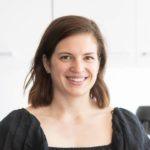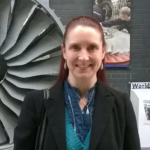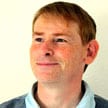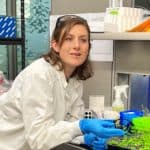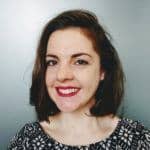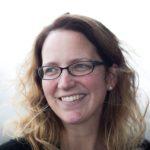Profile
Harriet Gamble
-
About Me:
I have always been really interested in designing things and in outer space so went to the University of Bath to study Aerospace Engineering. Since graduating I’ve been working at Airbus designing Earth Observation satellites!
-
Read more
In my spare time I like to be outside as much as possible. Most weekends I go gliding (it’s like a plane without an engine) it is an amazing feeling to soar like a bird through the sky, gliders can travel for hundreds of kilometres so there is always something new to see. I also enjoy camping and horse riding or just curling up with a good book.
-
My pronouns are:
she/her
-
My Work:
For my job I design Earth Observation satellite payloads. These help us to understand how the planet is changing; from the shrinking rain forest, to how the polar ice caps are melting and which volcanoes might erupt next.
-
Read more
A lot of the payloads I work on use Synthetic Aperture Radar technology (SAR). SAR payloads often use huge antennas so I do a lot of design work on how they can be folded up and packed down smaller so we can fit them on rockets and get them into space. Most observation satellites use a camera to gather data but SAR is where the satellite has a large antenna which sends microwave pulses towards Earth and then receives the reflected signals back to make an image. It might sound strange but it is not really that different to a camera. With a camera the sun sends out light which is reflected off the ground and bounces into the camera lens to create an image. The benefit of SAR is it can take images through clouds and can also work in complete darkness because it doesn’t rely on light from the sun. This means it can be used for lots of special tasks such as providing images during natural disasters where hurricane weather or volcanic dust might block the view. This way governments and aid providers know where to evacuate people from or where to help first. Another key use is for monitoring polar ice caps as SAR provides extra data which can show how thick the ice is or looking at rainforests it helps to work out how dense and healthy forests are.
I am currently working on a project for the European Space Agency (ESA) where we are designing a new satellite to join the Copernicus Program. This is a mission will provide loads of data to help Europe understand climate change, how we are affecting it but also look at things like land use for farming to help work out when it is best to sow seeds, collect crop etc. so we can grow more food and help stop global hunger. You can find out more about the Copernicus Program here: https://www.copernicus.eu/en/about-copernicus/
-
Education:
Cowplain Community School, Havant Sixth Form College & Bath University
-
Qualifications:
GCSEs including Design Technology, Business and Geography /
A-Level Maths, Further Maths, Physics and Electronics /
MEng Aerospace Engineering -
Work History:
Shop Assistant, Machine Operator, University Ambassador, Work experience and an internship with Airbus
-
Employer:
Airbus
-
My Interview
-
What did you want to be after you left school?
Astronaut
Were you ever in trouble at school?
Only for daydreaming
If you weren't doing this job, what would you choose instead?
To be an astronaut
Who is your favourite singer or band?
The Eagles
What's your favourite food?
Cake
-

